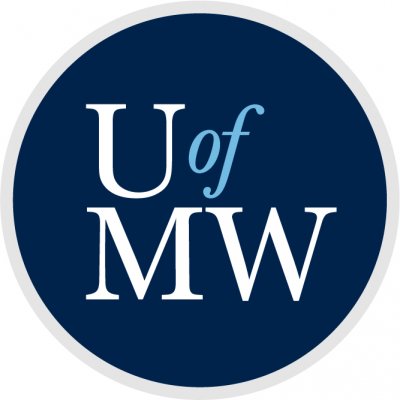Keith Mellinger
Professor of Mathematics University of Mary Washington

University of Mary Washington
View more experts managed by University of Mary Washington
Social
Biography
Dr. Mellinger speaks passionately about using mathematics to solve problems. “You’re in a big room and there’s a spider on one wall and on the opposite wall is a fly,” he said. “The question is, if the spider wants to walk along the walls and get to the fly, what’s the shortest path?” This is the question addressed in his article "The Spider and the Fly" which appears in the College Mathematics Journal, a publication of the Mathematical Association of America.
The recipient of many internal grants from UMW, Dr. Mellinger is a Project NExT fellow through the Mathematical Association of America. He has received numerous awards including a young investigator grant from the National Security Agency for his research in finite geometry and coding theory, and a national writing award from the Mathematical Association of America.
He has delivered professional presentations throughout the country and internationally, and has given many talks about the natural link between mathematics and music, his two biggest passions. Dr. Mellinger is an active professional guitarist and performs regionally both as a solo artist and in bluegrass and rock-n-roll bands, playing acoustic guitar and mandolin. In addition to his research and teaching, Dr. Mellinger also manages UMW’s First-Year Seminar Program
Areas of Expertise
Accomplishments
Millersville University Outstanding Young Alumni Achievement Award
2013-05-10
Presented by the Millersville University Alumni Association
Carl B. Allendoerfer National Writing Award
2009-02-01
Awarded by the Mathematical Association of America’s for the article, “Kirkman’s Schoolgirls Wearing Hats and Walking Through Fields of Numbers,” co-authored with Ezra Brown (VA Tech) and published in Mathematics Magazine
UMW Alumni Association Outstanding Young Faculty Award
2008-05-10
Presented by the University of Mary Washington Alumni Association
Education
University of Delaware
Ph.D.
Graduate Studies
University of Delaware
M.S.
Graduate Studies
Millersville University
B.S.
Undergraduate University
Affiliations
- American Mathematical Society
- Mathematical Association of America
- Institute of Combinatorics and its Applications
Links
Media Appearances
GREAT LIVES: Sir Isaac Newton left an indelible mark on society
The Free Lance-Star print
2021-02-01
BORN ON Christmas Day in 1742 to a family of humble roots, Isaac Newton grew to be regarded by many as the most influential scientist who ever lived.
Fredericksburg-area students take part in national walkout to protest violence in schools
The Free Lance-Star print
2018-03-15
An email about the walkout from Keith Mellinger, interim dean of UMW’s College of Arts and Sciences, went out to the arts and sciences faculty Tuesday evening.
“I want to be sure that you are aware that this is happening and that it is extremely important to many of your students,” Mellinger wrote. “I know we will have faculty and staff who will participate as well. Please be appropriately supportive.”
Commonwealth Cyber Initiative takes next steps with meeting of executive committee
Augusta Free Press online
2018-09-06
The following Blueprint Advisory Council members were nominated by their institutions.
Keith Mellinger, Dean, College of Arts and Sciences, University of Mary Washington
Articles
Small weight codewords in LDPC codes defined by (dual) classical generalized quadrangles
Design, Codes and Crytography2007-01-01
We find lower bounds on the minimum distance and characterize codewords of small weight in low-density parity check (LDPC) codes defined by (dual) classical generalized quadrangles. We analyze the geometry of the non-singular parabolic quadric in PG(4,q) to find information about the LDPC codes defined by Q (4,q), W(q) and H(3,q2) . For W(q) , and H(3,q2) , we are able to describe small weight codewords geometrically. For Q(4,q) , q odd, and for H(4,q2)D , we improve the best known lower bounds on the minimum distance, again only using geometric arguments. Similar results are also presented for the LDPC codes...
LDPC codes generated by conics in the classical projective plan
Design, Codes and Crytography2006-09-01
We construct various classes of low-density parity-check codes using point-line incidence structures in the classical projective plane PG(2,q). Each incidence structure is based on the various classes of points and lines created by the geometry of a conic in the plane. For each class, we prove various properties about dimension and minimum distance. Some arguments involve the geometry of two conics in the plane. As a result, we prove, under mild conditions, the existence of two conics, one entirely internal or external to the other. We conclude with some simulation data to exhibit the effectiveness of our codes.
The Spider and the Fly
College Mathematics Journal, Mathematical Association of America2012-03-01
The Spider and the Fly puzzle, originally attributed to the great puzzler Henry Ernest Dudeney, and now over 100 years old, asks for the shortest path between two points on a particular square prism. We explore a generalization, find that the original solution only holds in certain cases, and suggest how this discovery might be used in the classroom.





